We have a wide range of portfolio companies
Cambridge Enterprise Ventures invests across a diverse array of sectors. Our portfolio companies have gone on to raise over £3 billion in follow-on investment.
Over 20 years of investing at the University of Cambridge has seen a host of successes, including XO1, BlueGnome, Cambridge CMOS Sensors, Centessa, Gyroscope, Solexa, Quethera and VocalIQ.
The grid below shows a selection of our current portfolio companies. We define a portfolio company as one that we have given a loan to or one in which we hold shares or have a licence.
Scroll to section
Deep Tech

8Power
8power is an innovative technology company that specialises in self-powered wireless sensor solutions for industrial plant applications.
Point of Contact: Christine Martin Academic founders: Ashwin Seshia, Yu Jia, Jize Yan, Kenichi Soga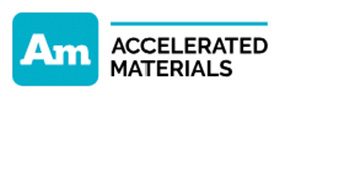
Accelerated Materials
Accelerated Materials revolutionises nanomaterial discovery and manufacturing using advanced microreactors, machine learning, and automation to create sustainable, next-generation products.
Point of Contact: Christine Martin Academic founders: Nicholas Jose, Alexei Lapkin
AEMS
AEMS' software, Zeta, is the world’s first semi-autonomous project management software that takes planning and execution to a level beyond human capabilities.
Point of Contact: Christine Martin Academic founder: Weam Aridi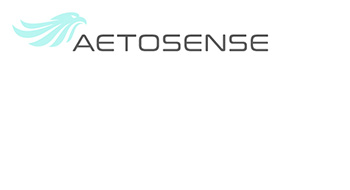
Aetosense
AetoSense develops advanced air quality monitoring systems that enhance indoor air quality and optimise energy consumption by detecting ultrafine particles.
Point of Contact: Christine Martin Academic founder: Molly Haugen
AllFocal Optics
AllFocal Optics is a company that manufactures lenses for AR/VR glasses, solving physical side effects like headaches and nausea, and providing high-resolution, bright virtual images superimposed on the real world.
Point of Contact: Christine Martin Academic founders: Pawan Shrestha, Xin Chang, Daping Chu
Aqdot
Aqdot is a supramolecular chemistry company with a focus and expertise in developing, licensing and selling novel proprietary products.
Point of Contact: Christine Martin Academic founders: Oren Scherman, Chris Abell, Roger Coulston, Jing Zhang
BKwai
BKwai combines world-class data science and construction engineering expertise to give engineers the technology solutions they deserve and need.
Point of Contact: Christine Martin Academic founder: Sivasakthy Selvakumaran
Bond180
Bond180 is a data analytics and distributed ledger technology platform for increasing the efficiency of bond issuance and investment
Point of Contact: Christine Martin Academic founders: Parth Shukla, Philip Holbrook, Conor Diviney
Cambridge Graphene
Cambridge Graphene supply novel graphene inks and develop graphene/2D materials technology and applications for customers.
Point of Contact: Christine Martin Academic founders: Andrea Ferrari, Mark Shepherd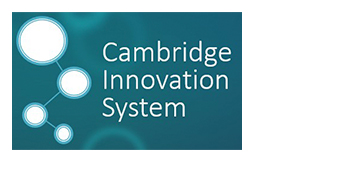
Cambridge Innovation System
Cambridge Innovation System specialises in the design and development of innovation ecosystems and technobusiness hubs, with a focus on accelerating the commercialisation of disruptive ideas and AI solutions. Through applied research, consultancy, and education, the company supports entrepreneurship, technology transfer, and partnerships, driving innovation, startup growth, and AI adoption across sectors.
Point of Contact: Christine Martin Academic founder: Tomasz Szejner
Cambridge Touch Technologies
Cambridge Touch Technologies (CTT) is a spin-out specialising in advanced touch technology. Their UltraTouch system uses piezoelectric materials and AI to enable multi-touch and force sensing on smart devices, even in challenging conditions like rain or underwater.
Point of Contact: Christine Martin Academic founders: Arokia Nathan, Corbin Church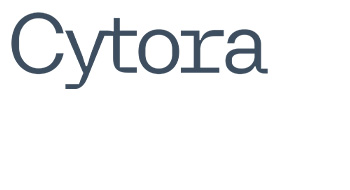
Cytora
Cytora have created a configurable platform that enables commercial insurers to create digital workflows by digitising, evaluating and routing risks.
Point of Contact: Christine Martin Academic founders: Richard Hartley, Joshua Wallace, Andrzej Czapiewski, Aeneas Wiener
Enval
Enval Ltd uses microwave-induced pyrolysis to recycle flexible packaging, extracting valuable materials like aluminum and oil. Their technology supports a circular economy by making unrecyclable plastics valuable.
Point of Contact: Christine Martin Academic founders: Howard Chase, Carlos Ludlow-Palafox
Focal Point Positioning
Focal Point Positioning is a company specialising in advanced positioning solutions. They develop software that enhances the accuracy, reliability, and energy efficiency of GNSS devices, making them suitable for urban environments and various applications like mobile, wearables, and vehicles.
Point of Contact: Christine Martin Academic founders: Mark Crockett, Darren Buckle, Scott Pomerantz, Nicolas Couronneau
IKVA
iKVA is an early-stage AI Knowledge Management company creating solutions for organisations to discover data and intelligently and proactively provide it to users when they need it, enabling better business insights.
Point of Contact: Christine Martin Academic founders: Richard Mortier, Jon Crowcroft, Liang Wang
Immaterial
Immaterial Ltd have the in-depth expertise and know-how to design a system solution with optimised monolithic metal-organic framework materials around a process tailored to your operating conditions.
Point of Contact: Christine Martin Academic founders: Andrew Marsden, Mohammed Khan, David Fairen-Jimenez
Intellegens
Intellegens is a company that develops AI software for data analysis in R&D, specialising in training neural networks on sparse or noisy data to improve experimental efficiency and product design.
Point of Contact: Christine Martin Academic founders: Gareth Conduit, Ben Pellegrini, Graham Snudden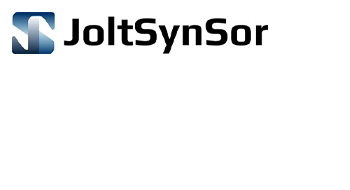
JoltSynSor
Joltsynsor is a company that specialises in AI-driven structural health monitoring, using advanced AI, machine learning, and sensor technology to enhance infrastructure reliability, safety, and longevity.
Point of Contact: Christine Martin Academic founders: Geyang Song, Brian Sheil, Leo Jiang
Matta
Matta is a company that develops AI software for advanced manufacturing, specialising in error detection and correction in 3D printing and other processes to improve efficiency and reduce waste.
Point of Contact: Christine Martin Academic founders: Douglas Brion, Sebastian Pattinson
MedicBank Healthcare
MedicBank is a healthcare tech company focused on solving healthcare staffing issues and improving global healthcare quality.
Point of Contact: Christine Martin Academic founders: Andrew Isiakpere, Kourosh Saeb-Parsy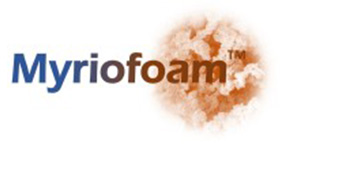
Myriofoam
Myriofoam develops high capillarity micron-scale metal foams for heat transfer, energy storage, and lightweight structures.
Point of Contact: Christine Martin Academic founders: Davor Copic, Michael De Volder
Nanomation
Nanomation is a semiconductor software company that enables the industry to unlock the transformative power of nanomaterials.
Point of Contact: Christine Martin Academic founders: Charlotte Esler, Jack Alexander-Webber, Teja Potočnik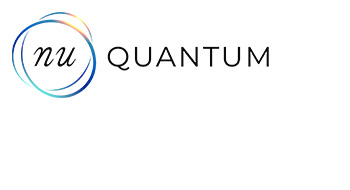
Nu Quantum
Nu Quantum is creating high-performance, quantum networking solutions that will predicate the future of quantum information processing.
Point of Contact: Christine Martin Academic founders: Carmen Palacios Berraquero, Sam Funnell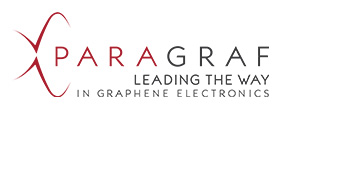
Paragraf
Paragraf is a company that mass produces graphene-based electronic devices using standard semiconductor processes for applications in automotive, healthcare, and quantum computing.
Point of Contact: Christine Martin Academic founders: Simon Thomas, Ivor Guiney, Colin Humphreys
PervasID
PervasID is a fast-growing technology company that designs and supplies world-leading, passive RAIN RFID fixed reader systems for automating inventory tracking, stock taking and asset management processes.
Point of Contact: Christine Martin Academic founders: Ian White, Richard Penty, Sithamparanathan Sabesan, Michael Crisp
Planetary Processing
Planetary Processing is a company that provides an MMO creation and management platform, integrating with game engines to simplify the development and operation of large-scale online games.
Point of Contact: Christine Martin Academic founder: Samuel Sully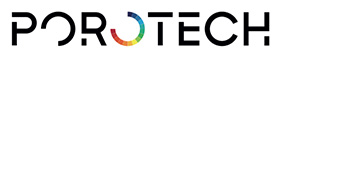
Poro Technologies
Porotech develops innovative gallium nitride (GaN) material technology for applications in the electronics industry, particularly focusing on microLED displays.
Point of Contact: Christine Martin Academic founders: Tongtong Zhu, Yingjun Liu, Rachel Oliver
ProSpectral
ProSpectral develops compact, low-cost spectral imaging technology for material identification and analysis.
Point of Contact: Christine Martin Academic founders: Thomas Albrow-Owen, Oliver Burton, Gwenhivir Wyatt-Moon
RegGenome
RegGenome provide machine-readable regulatory content that is dynamic, granular, and interoperable, all powered by AI-based textual information extraction techniques.
Point of Contact: Christine Martin Academic founders: Robert Wardrop, Shruti Kumar
Riverlane
Riverlane is a company focused on advancing quantum computing by developing the Quantum Error Correction Stack. Their mission is to make quantum computing useful much sooner than previously thought possible.
Point of Contact: Christine Martin Academic founders: Rebecca Simmons, Steve Brierley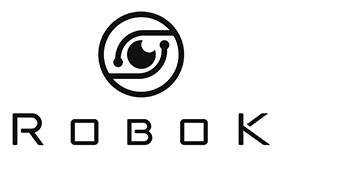
RoboK
RoboK is a start-up that uses AI-powered computer vision to improve industrial safety and performance through their product, SiteLens™.
Point of Contact: Christine Martin Academic founders: Hao Zheng, Glen Clark
Signaloid
Signaloid provides a computing platform to quantify, transmit, and track data uncertainty dynamically and throughout computations in unmodified computing workloads.
Point of Contact: Christine Martin Academic founder: Phillip Stanley-Marbell
Sorex Sensors
Sorex Sensors develops highly sensitive MEMS mass sensors using film bulk acoustic resonator (FBAR) technology to detect and measure harmful compounds in the air.
Point of Contact: Christine Martin Academic founder: Andrew Flewitt
Super-Sharp Space Systems
SuperSharp is a space tech company developing thermal infrared space telescopes for Earth observation. Their innovative technology fits large telescopes into small satellites, providing high-resolution thermal imagery to tackle global challenges like climate change and precision agriculture.
Point of Contact: Christine Martin Academic founders: Ian Parry, George Hawker, Marco Gomez Jenkins
Tenyks
Tenyks is a leading provider of advanced visual search engine technology. Their platform, powered by Frontier GenAI technology, serves industries such as industrial, robotics, media & entertainment, and security, helping users extract valuable insights and streamline operations.
Point of Contact: Christine Martin Academic founders: Botty Dimanov, Dmitry Kazhdan
Wave Photonics
Wave Photonics is using computational techniques to create tools and IP to enable and accelerate the development, mass production and adoption of these technologies.
Point of Contact: Christine Martin Academic founders: Matthew Anderson, James Lee
Zomp
Zomp is revolutionising spatial flow cytometry by delivering 3D sub-cellular resolution in multiple fluorescence channels at high speed, enabling advanced cellular analysis.
Point of Contact: Christine Martin Academic founders: Steven Lee, Kevin O'Holleran, Gillies KleboeLife Sciences

52 North
52 North is reinventing the healthcare journey, creating affordable, cutting-edge technology to bring healthcare closer to patients.
Point of Contact: Amanda Wooding Academic founders: Umaima Malik-Ahmad, Saif Ahmad, Fahad Ali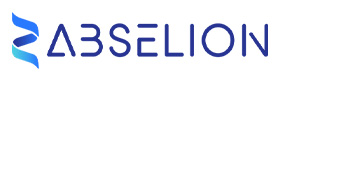
Abselion
Abselion simplifies protein quantification with automated biosensors, enabling rapid and accurate analysis for pharmaceutical research and manufacturing.
Point of Contact: Amanda Wooding Academic founders: Ruizhi Wang, Stephan Hofmann, Christoph von Bieberstein
Bilitech
Bilitech is a bleeding edge biomedical technology company which leverages a cellular therapy platform in order to advance the huge potential of organoid technology in regenerative medicine.
Point of Contact: Amanda Wooding Academic founders: Fotios Sampaziotis, Kourosh Saeb-Parsy
Biomodal
Biomodal develops advanced technologies and analytics for life scientists and clinical developers, offering comprehensive insights into genetic and epigenetic interactions with their DNA sequencing tools.
Point of Contact: Amanda Wooding Academic founder: Shankar Balasubramanian
Biophonics
Biophonics uses AI and acoustic technology for early valvular heart disease screening, aiming to improve diagnosis and reduce hospital strain.
Point of Contact: Amanda Wooding Academic founders: Anurag Agarwal, Andrew McDonald, Edmund Kay
BIOS Health
BIOS envisions a new field of digital health treatments that use this new data-driven insight from the nervous system to create better, more targeted medicine.
Point of Contact: Amanda Wooding Academic founder: Emil Hewage
BioTryp Therapeutics
BioTryp Therapeutics is developing biofilm inhibitors to prevent infections and promote health and wellbeing.
Point of Contact: Amanda Wooding Academic founders: Ashraf Zarkan, Jehangir Cama, David Summers
Bit Bio
Bit Bio is a synthetic biology company providing human cells for research, drug discovery and cell therapy.
Point of Contact: Amanda Wooding Academic founders: Mark Kotter, Benhard Klemen
Cambridge Adaptive Testing
Cambridge Adaptive Testing offers a quick and reliable mental health check for young people in schools. Using computerised adaptive technology, it provides instant feedback and tailored reports to help identify and support students with mental health issues.
Point of Contact: Amanda Wooding Academic founders: Peter Jones, Jan Stochl
Cambridge Vision Technology
Cambridge Vision Technology (CVT) is a medical device company specialising in diagnostic tests for early detection of eye and neurodegenerative diseases.
Point of Contact: Amanda Wooding Academic founders: Andrew Kadis, James Wood
Cambris Cardiac
CamBris Cardiac is to develop the next generation of polymeric heart valves, which are cheaper, easier to produce and more robust than current approaches.
Point of Contact: Amanda Wooding Academic founders: Geoffrey Moggridge, Raimondo Ascione, Joanna Stasiak, Marta Serrani
CardiaTec Biosciences
CardiaTec Biosciences is applying artificial intelligence on large-scale multi-omic data to develop the next generation of cardiovascular disease drug targets.
Point of Contact: Amanda Wooding Academic founders: Namshik Han, Raphael Peralta, Thelma Zablocki
Carrick Therapeutics
Carrick Therapeutics is a clinical-stage biopharmaceutical company focused on building the future of oncological therapy to improve patient outcomes.
Point of Contact: Amanda Wooding Academic founders: Stephen Jackson, Elaine Sullivan
CellCentric
CellCentric is a clinical stage biotech company; developing a novel anti-cancer drug, currently in clinical trials for prostate and haematological cancers.
Point of Contact: Amanda Wooding Academic founders: Will West, Azim Surani, Jessica Salter
ConcR
Concr is a techbio company that leverages astrophysics technology to predict patient outcomes and treatment responses for cancer therapies.
Point of Contact: Amanda Wooding Academic founders: Matthew Foster, Irina Babina, Matthew Griffiths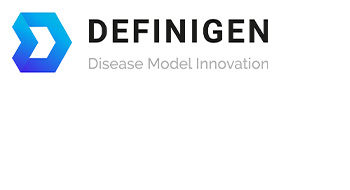
DefiniGEN
DefiniGEN is a company that provides optimised human cell products for scientific research, specialising in creating predictive cell-based models of liver disease to accelerate drug development.
Point of Contact: Amanda Wooding Academic founders: Roger Pedersen, Ludovic Vallier
DIOSynVax
Diosvax is a company specialising in the digital design and synthesis of immune-optimized vaccines. Their technology accelerates vaccine development and enhances protection against emerging and re-emerging pathogens like influenza and COVID-19.
Point of Contact: Amanda Wooding Academic founders: Jonathan Heeney, Simon Frost, Ralf Wagner, Rebecca Kinsley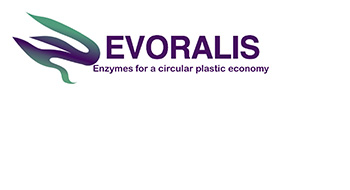
Evoralis
Evoralis is a UK-based company specialising in enzyme-based recycling solutions, they develop enzymes that break down plastics for a circular economy, focusing on textiles. Their technology aims to make recycling more efficient and environmentally friendly.
Point of Contact: Amanda Wooding Academic founders: Mariana Pereira, Daniel Kauke, Josephine Holstein
Function Rx
Function RX Limited is a biotechnology company that specialises in research and development, focusing on therapies for neurodegeneration.
Point of Contact: Amanda Wooding Academic founders: Gabriel Balmus, John Skidmore, Sarah Tabrizi
Healthera
Healthera is a health tech company providing a platform for ordering NHS prescriptions and accessing pharmacy services. They partner with over 1,600 pharmacies to offer medication management, delivery, and health services through their app.
Point of Contact: Amanda Wooding Academic founders: Tiannan Hao, Jin Dai, Victor Wong, Sichen Liu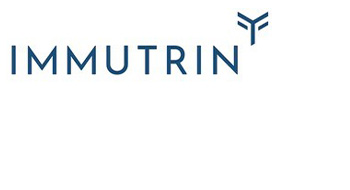
Immutrin
Immutrin Ltd is a biotech company who develop transformative antibody treatments to remove harmful amyloid deposits in patients with systemic and local amyloidosis.
Point of Contact: Amanda Wooding Academic founders: Gregory Winter, Mark Pepys
Inotec AMD
Inotec AMD is a company specialising in wound care, that develops the NATROX® device, which delivers humidified oxygen to chronic wounds to promote faster healing.
Point of Contact: Amanda Wooding Academic founder: Derek Fray
Kalium Health
Kalium Health is a company that develops real-time blood electrolyte monitoring devices to improve the management of kidney and heart diseases.
Point of Contact: Amanda Wooding Academic founders: Elizabeth Norgett, Fiona Karet, Elizabeth Neill, Tom Collings, Tanya Hutter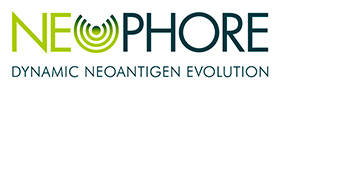
NeoPhore
NeoPhore develops small molecule drugs that target cancer neoantigen evolution, aiming to enhance cancer immunotherapy.
Point of Contact: Amanda Wooding Academic founder: Ashok Venkitaraman
NoBACZ Healthcare
NoBACZ Healthcare is a company that specialises in sustainable, rapid-setting flexible barrier dressings for veterinary and human use, utilising a patented natural polymer to provide waterproof, antimicrobial protection.
Point of Contact: Amanda Wooding Academic founders: Jonathan Powell, Nuno Faria
Octiocor
Octiocor develops AI-driven coronary imaging technology to detect high-risk plaques and prevent heart attacks.
Point of Contact: Amanda Wooding Academic founders: Martin Bennett, Abel Ureta-Vidal
Orbit
Orbit uses non-invasive neurotech to make mental health as transparent and actionable as physical health.
Point of Contact: Amanda Wooding Academic founder: Akshat Sharma
Pharmenable
PharmEnable is an AI drug discovery company unlocking challenging targets by mapping unexplored chemical space to deliver innovative medicines.
Point of Contact: Amanda Wooding Academic founders: Hannah Sore, David Spring, Natalia Mateu Sanchis, Jelena Aleksic, Andreas Bender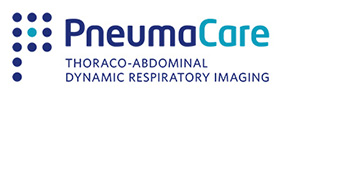
PneumaCare
PneumaCare Ltd is a Cambridge based company, developing the non-contact, non-invasive technology – Structured Light Plethysmography (SLP) which helps to assess lung function.
Point of Contact: Amanda Wooding Academic founders: Gareth Roberts, Richard Iles, Joan Lasenby
Polypharmakos
Polypharmakos is a joint venture between the University of Cambridge and the Royal Botanic Gardens, leveraging AI and deep ethnobotanical knowledge to discover and develop novel anti-inflammaging nutraceuticals and drugs from natural extracts.
Point of Contact: Amanda Wooding Academic founders: Clare Bryant, Duncan Maskell, Mark Holmes
Pretzel Therapeutics
Pretzel Therapeutics are developing groundbreaking therapies based on a deep mechanistic understanding of mitochondrial biology.
Point of Contact: Amanda Wooding Academic founder: Michal Minczuk
PsyOmics
Psyomics is a company that enhances mental health care with digital solutions. Their main product, Censeo, helps clinicians by collecting detailed patient-reported mental health information, streamlining assessments, and improving patient experiences.
Point of Contact: Amanda Wooding Academic founders: Sabine Bahn, Kevin McDonnell, Melinda Rees
Qkine
Qkine manufactures high-purity, animal-free growth factors, cytokines and other complex proteins.
Point of Contact: Amanda Wooding Academic founders: Catherine Elton, Marko Hyvönen
Sano Genetics
Sano Genetics accelerates precision medicine research with its platform for DNA testing, participant recruitment, and clinical study support. They offer at-home DNA testing and tools for long-term participant engagement to enhance research efficiency and participant experience.
Point of Contact: Amanda Wooding Academic founders: Patrick Short, William Jones, Charlotte Chamot-Guzzo
SDS Therapeutics
SDS Therapeutics is a biotechnology company, specialising in the development of restorative small molecule therapy for Shwachman-Diamond Syndrome.
Point of Contact: Amanda Wooding Academic founder: Allen Warren
Semarion
Semarion is a company that accelerates drug discovery with its SemaCyte® microcarrier platform. Their technology uses novel materials to move and freeze adherent cells, enhancing cell assays with flexibility, speed, and miniaturisation.
Point of Contact: Amanda Wooding Academic founders: Jeroen Verheyen, Tarun Vemulkar, Russell Cowburn
Sentinel Oncology
Sentinel Oncology is a drug discovery company focused on developing new therapeutics for cancer and diseases with high unmet medical needs.
Point of Contact: Amanda Wooding Academic founder: Ashok Venkitaraman
Sphere Bio
Sphere Bio is a life sciences company specialising in single cell analysis and isolation. They use picodroplet microfluidic technology to provide high-throughput platforms and consumables for biopharmaceutical discovery, cell therapy engineering, and synthetic biology.
Point of Contact: Amanda Wooding Academic founders: Chris Abell, Wilhelm Huck
Spirea
Spirea is a biotech company specialising in developing the next generation of Antibody Drug Conjugates (ADCs) for targeted cancer therapy. Their innovative ADC platform aims to improve the efficacy and safety of cancer treatments by delivering precise drug doses to cancer cells.
Point of Contact: Amanda Wooding Academic founders: Myriam Ouberai, Mark Welland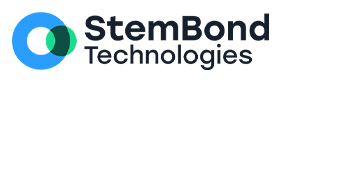
StemBond Technologies
Stembond Technologies, a spin-out from the University of Cambridge’s Stem Cell Institute, focuses on revolutionising cell-based medicine. They specialise in advanced materials for cell and tissue culture, aiming to enhance immune function and improve cell therapy outcome.
Point of Contact: Amanda Wooding Academic founders: Andrew Hodgson, Chibeza Agley, Kevin Chalut, Carla Mulas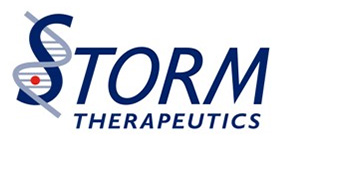
Storm Therapeutics
STORM Therapeutics (STORM) is a clinical stage biotechnology company creating novel therapies that inhibit RNA modifying enzymes (RME) for use in oncology and other diseases.
Point of Contact: Amanda Wooding Academic founders: Tony Kouzarides, Eric Miska
T-Therapeutics
T-Therapeutics is a biotech company developing next-generation T cell receptor (TCR) therapeutics to target and destroy cancer cells, leveraging their proprietary OpTiMus® platform.
Point of Contact: Amanda Wooding Academic founder: Allan Bradley
Transition Bio
Transition Bio is a biotech company developing novel therapeutics with advanced technologies to target diseases driven by biomolecular condensates, focusing on oncology and rare genetic diseases.
Point of Contact: Amanda Wooding Academic founders: Samuel Cohen, Martin Kulander, Peter St-George-Hyslop, Tuomas Knowles, Sarah Teichmann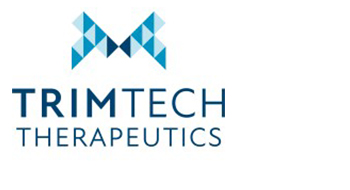
TRIMTECH Therapeutics
TRIMTECH Therapeutics is developing targeted protein degradation therapies to treat neurodegenerative diseases by eliminating toxic protein aggregates while preserving healthy proteins.
Point of Contact: Amanda Wooding Academic founders: William McEwan, Leo James, Damian Crowther
Trutina Therapeutics
Trutina Therapeutics is a biotech company focused on developing innovative therapies through advanced research and experimental development in biotechnology.
Point of Contact: Amanda Wooding Academic founder: James Huntingdon
UpFront Diagnostics
Upfront Diagnostics is a company that develops rapid blood tests for stroke diagnosis, focusing on identifying large vessel occlusion (LVO) strokes to improve treatment and patient outcomes.
Point of Contact: Amanda Wooding Academic founders: Gonzalo Ladreda, Edoardo Gaude
Vector Bioscience
Vector Bioscience Cambridge specialises in nanoparticle-based drug delivery systems for cancer treatment. Their technology uses machine learning to enhance precision and minimise side effects.
Point of Contact: Amanda Wooding Academic founders: David Fairen-Jimenez, Jogchum Brinksma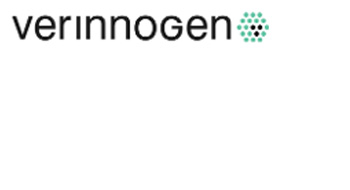
Verinnogen
Verinnogen develops advanced 3D surface profiling technology to improve pre-clinical cancer research by providing accurate and repeatable data collection.
Point of Contact: Amanda Wooding Academic founders: Isaac Johnson, Michael Irvine
William Oak Diagnostics
William Oak Diagnostics' vision is to eliminate micronutrient deficiencies. Their innovative point-of-care test with integrated blood-collection simplifies the identification of numerous micronutrient deficiencies.
Point of Contact: Amanda Wooding Academic founders: Alexander Patto, Tim Dwyer
Xterna
Xterna offers novel solutions for cell-type specific drug delivery, leveraging advanced biotechnology to improve therapeutic outcomes.
Point of Contact: Amanda Wooding Academic founders: Chris Wan, Jessica Corry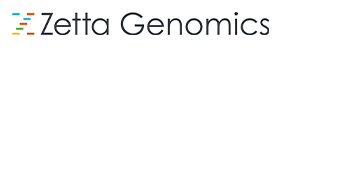
Zetta Genomics
Zetta Genomics provides advanced genomic data management solutions to enable continuous re-interpretation of genomic data at speed and scale, enhancing precision medicine and improving health outcomes for millions of patients around the world.
Point of Contact: Amanda Wooding Academic founders: Ignacio Medina, William Spooner, Jim CookSocial Ventures

Aspuna Group
Aspuna Group is a social impact commodities asset management business with a proven model for making trading fair.
Point of Contact: Amanda Wooding Academic founders: Maria-Yassin Yah, Luis Prazeres
Cosysense
Cosysense enhances energy efficiency in commercial buildings using advanced sensors and AI to optimise HVAC systems. Their solution reduces energy consumption and costs, with clients paying only a fraction of the savings achieved.
Point of Contact: Amanda Wooding Academic founders: Matias Acosta, Sebastian Horstmann
Kalamna Global
Kalamna Global is an award-winning social enterprise that empowers families to connect with and celebrate their culture and heritage through the Arabic language.
Point of Contact: Amanda Wooding Academic founders: Yosra Koura, Saussan Khalil
Majico
Majico designs and develops innovative water kiosk solutions, combining human-centered design, novel purification technologies, and automated water management to address drinking water issues in East Africa.
Point of Contact: Amanda Wooding Academic founders: Michael Coto, Peter Knight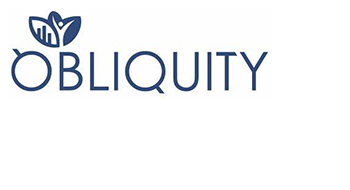
Obliquity Group
Obliquity Group have developed breakthrough employee-focused data analytics that enables more inclusive, quantified and embedded sustainability strategies.
Point of Contact: Amanda Wooding Academic founders: John Isherwood, Simon Kelly
WaterScope
WaterScope's mission is to enable inclusive access to smart, easy-to-use, and reliable testing for bacterial presence in drinking water.
Point of Contact: Amanda Wooding Academic founder: Richard Bowman
Where You At
WYA (Where You At) uses Bluetooth technology to help users locate friends in crowded venues by providing precise positioning and real-time updates, even without a phone signal.
Point of Contact: Amanda Wooding Academic founder: Tamzin LentSustainability

Barocal
Barocal is a spin-out of the University of Cambridge that is pioneering barocaloric technology to satisfy low-carbon heating and cooling requirements and provide a unique efficient solution without greenhouse gases.
Point of Contact: Chris Gibbs Academic founder: Xavier Moya
BravelyCultured
BravelyCultured is developing sustainable, skin-friendly biodegradable chemicals, with an initial focus on biosurfactants for personal and home care products.
Point of Contact: Chris Gibbs Academic founders: Natalija Stepurko, James Dunce
Cambridge Electric Cement
Cambridge Electric Cement has developed a low-carbon, recycled cement using electric arc furnaces. This innovative process reduces emissions by co-recycling steel and cement, offering a sustainable alternative to traditional cement production.
Point of Contact: Chris Gibbs Academic founders: Julian Allwood, Bill Yost, Poppy Brewer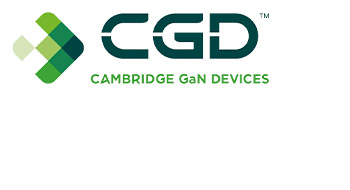
Cambridge GaN Devices
Cambridge GaN Devices (CGD) is a fabless semiconductor company that develops a range of energy-efficient GaN-based power devices to make greener electronics possible.
Point of Contact: Chris Gibbs Academic founders: Giorgia Longobardi, Florin Udrea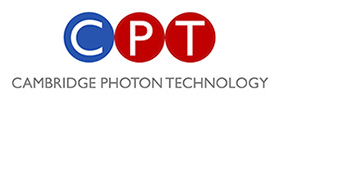
Cambridge Photon Technology (CPT)
Cambridge Photon Technology (CPT) is developing next-generation advanced materials designed to increase the performance of existing silicon solar panels by as much as 15%.
Point of Contact: Chris Gibbs Academic founder: Akshay Rao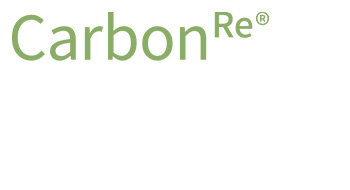
Carbon Re
Carbon Re is an AI and climate tech software solution provider for glass, cement and other energy-intensive industries.
Point of Contact: Chris Gibbs Academic founders: Daniel Summerbell, Buffy Price, Aidan O'Sullivan, Sherif Elsayed-Ali
Colorifix
Colorifix is developing a revolutionary dyeing process to help the textile industry dramatically reduce its environmental impact.
Point of Contact: Chris Gibbs Academic founders: James Ajioka, David Nugent, Orr Yarkoni
DeepForm
DeepForm Limited offer novel press tool designs for automotive and other high volume customers, suited to a wide range of steel and aluminium panels.
Point of Contact: Chris Gibbs Academic founders: Christopher Cleaver, Julian Allwood, Adam Nagy-Sochacki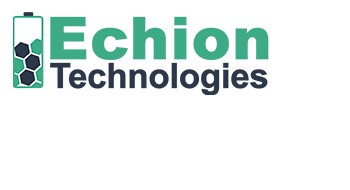
Echion Technologies
Echion Technologies is developing a portfolio of advanced battery active anode materials for Li-ion batteries.
Point of Contact: Chris Gibbs Academic founders: Jean de la Verpilliere, Michael De Volder, Adam Boies, Alexander Groombridge
illumion
illumion develops optical tools that use charge photometry to accelerate battery material development by visualising state-of-charge changes in active particles.
Point of Contact: Chris Gibbs Academic founders: Alice Merryweather, Christoph Schnedermann, Akshay Rao, Dame Clare Grey
Matnex
Matnex uses AI and quantum mechanics to accelerate the discovery and development of sustainable materials. Their platform aims to create high-performance, cost-effective, and environmentally friendly materials for various industries.
Point of Contact: Chris Gibbs Academic founders: Robert Forrest, Jonathan Bean
Molyon
Molyon develops high-energy density lithium-sulfur batteries for weight-critical applications, offering twice the energy density of current lithium-ion batteries.
Point of Contact: Chris Gibbs Academic founders: Ismail Sami, Manish Chhowalla
Neutreeno
Neutreeno is a company that develops a B2B SaaS platform for decarbonisation, helping businesses achieve net zero emissions by providing real-time emissions analysis and efficiency insights.
Point of Contact: Chris Gibbs Academic founder: Spencer Brennan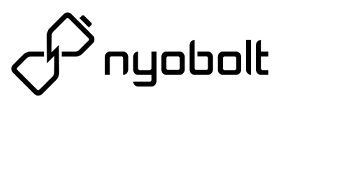
Nyobolt
Nyobolt is a company that develops high-power, ultrafast-charging battery technology for applications like electric vehicles, power tools, and industrial robotics.
Point of Contact: Chris Gibbs Academic founders: Sai Shivareddy, Clare Grey, Kent Griffith
Protonera
Protonera specialises in converting waste plastics into hydrogen, providing sustainable waste management solutions to reduce reliance on fossil fuels.
Point of Contact: Chris Gibbs Academic founders: Chengzhi Guo, Subhajit Bhattacharjee, Erwin Reisner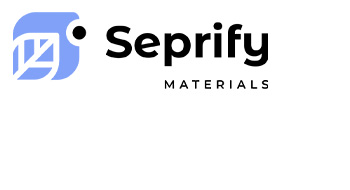
Seprify AG
Seprify manufactures cellulose-based white pigments as sustainable alternatives to titanium dioxide for use in paints, inks, cosmetics, pharmaceuticals, and food products.
Point of Contact: Chris Gibbs Academic founders: Lukas Schertel, Oliver Polcher
Sparxell
Sparxell is a company that creates biodegradable, vegan colour pigments from plant-based cellulose. Their eco-friendly pigments offer a sustainable alternative to traditional dyes, aiming to reduce environmental impact.
Point of Contact: Chris Gibbs Academic founder: Benjamin Droguet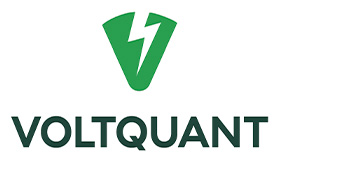
Voltquant
Voltquant provides advanced AI and GIS software solutions to optimise infrastructure deployment and enhance efficiency in the energy sector.
Point of Contact: Chris Gibbs Academic founders: Nikita Dabizha, George Kolokotronis, Gareth Dauley
Xampla
Xampla develops natural, biodegradable materials from plant proteins to replace single-use plastics, offering a sustainable alternative that integrates seamlessly with existing manufacturing processes,
Point of Contact: Chris Gibbs Academic founders: Alexandra French, Marc Rodriguez-Garcia, Tuomas Knowles
xWATTS
xWATTS provides intelligent energy management software that reduces costs and emissions in commercial buildings through automation and predictive control.
Point of Contact: Chris Gibbs Academic founders: Yigit Akar, Alexander Allen



